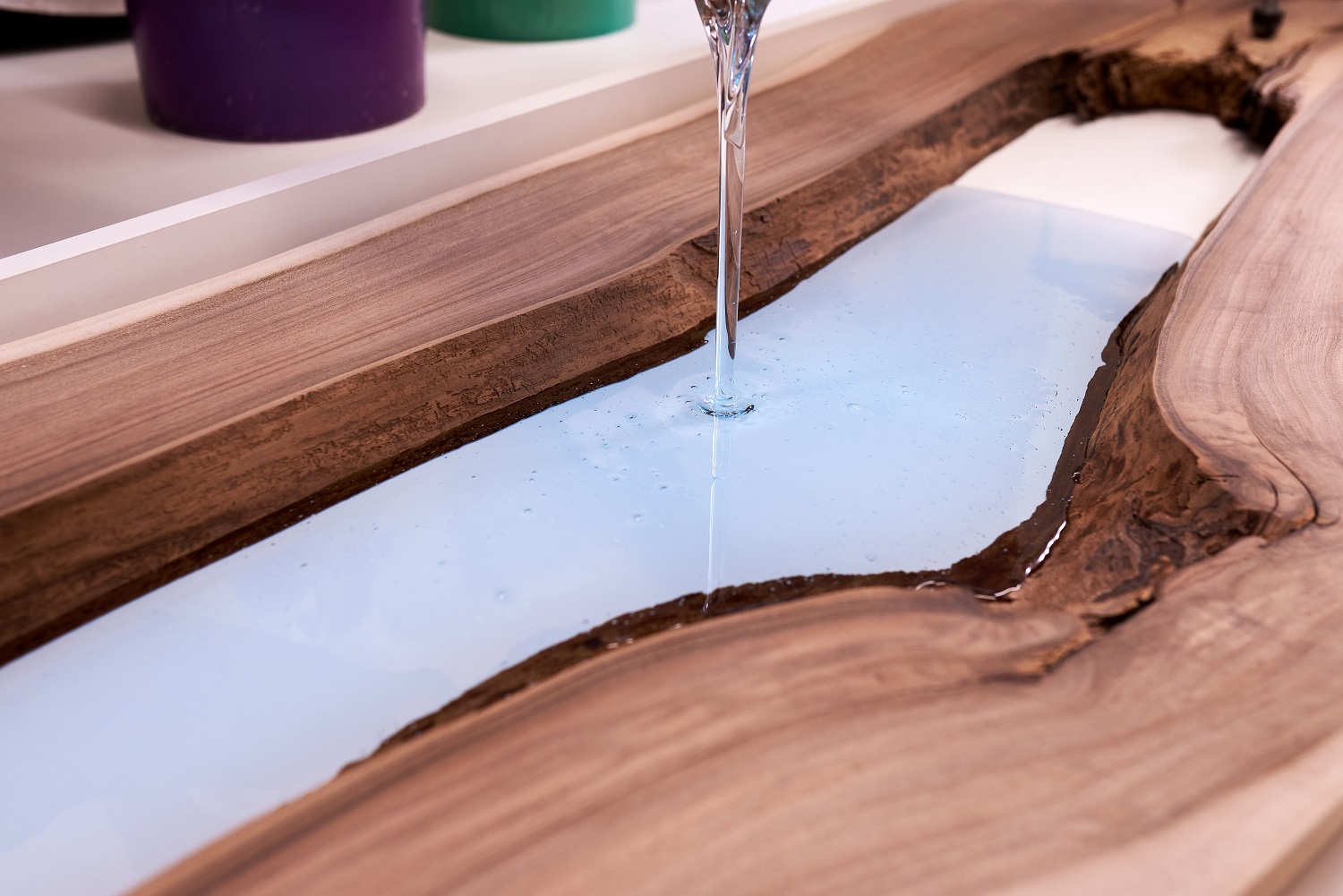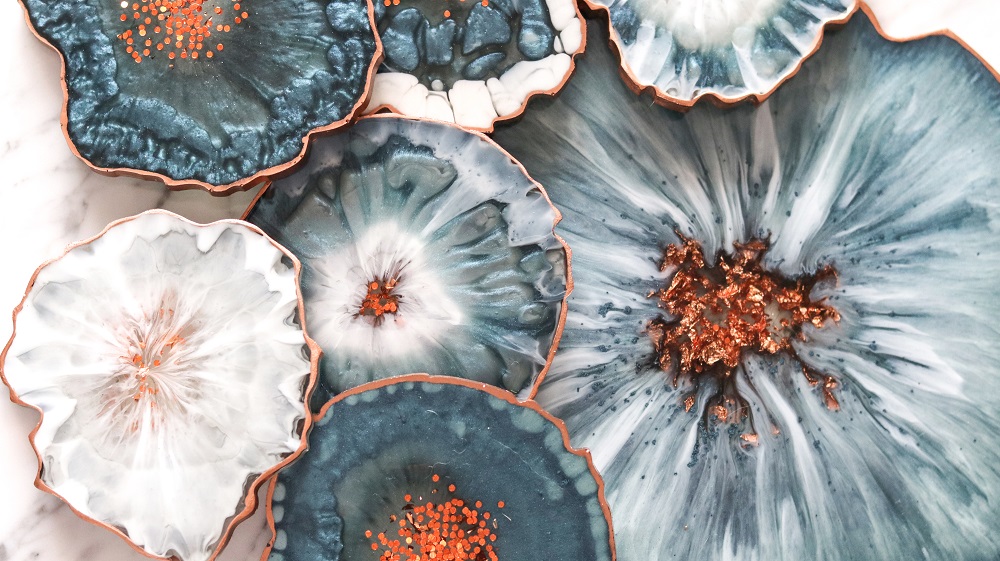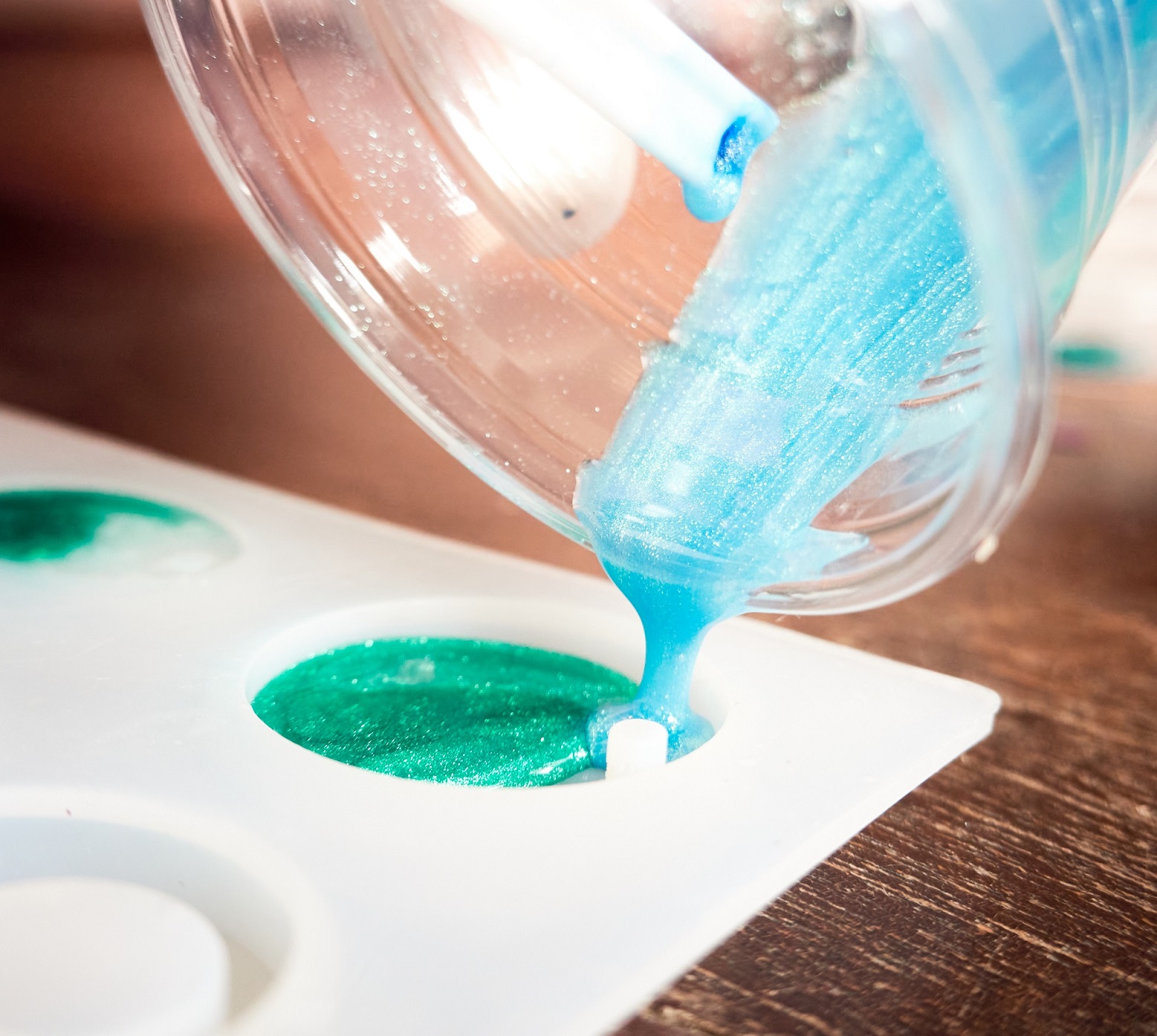Epoxy is a two-component, thermosetting plastic. The two components consist of component A, the base resin, and component B, the hardener. After mixing both components, a chemical process occurs. This process ensures the hardening of the epoxy resin.
When you use epoxy resin in combination with glass fibre or other fibres, this is called a composite. Laminated or cast pieces of epoxy resin and composites are much lighter in weight than traditional materials such as metal, wood or aluminium.
There are different types of epoxies.
Casting resins
The first type of epoxy we will discuss is the casting resin. This can be used for both crystal clear and coloured castings. You can also add dry fillers to epoxy casting resin to obtain a polymer concrete. Polymer concrete resembles concrete after curing, but is up to four times stronger than classic concrete. Within the range of casting resins, there are very clear resins with different hardeners. By using a fast working hardener, it is possible to make small castings. With the slowly hardening hardener you can also pour large volumes in one go. Important to know is that, during the chemical process of hardening, heat is generated. So if you would cast larger volumes with a fast hardener, the whole thing would burst due to the heat.
Lamination resins
A second type of epoxy is laminating resin. This type of epoxy resin has to be used in combination with fibres. This is the case with glass fibre, aramid (also known as kevlar) or the very strong and stiff carbon (carbon fibre). By using these reinforcing fibres to place multiple layers on top of each other, you get a laminate. This laminate creates an extremely light, yet strong whole. In addition to the standard laminating epoxy, there are also Bio Epoxy laminating resins available today. These are made from natural raw materials, such as the shells of the cashew nut. The properties of these biobased epoxies are in some cases even better than the standard variants. Bio Epoxy is best used in combination with natural fibres such as flax fibre or basalt fibre.
Adhesives
There are also adhesives based on epoxy. These 2-component adhesives are used in various sectors, including construction, model building and the production of parts for cars and boats. Thanks to the rapid curing and very good water resistance, epoxy adhesives are excellent for structural connections. An additional advantage is the chemical resistance and mechanical properties.
Furthermore, epoxies are also used as primer (adhesive layer) or as coating. The unique properties of epoxy resin offer an excellent adhesion to various substrates such as wood, concrete, plastics and metal or aluminium. These primers offer an excellent undercoat for different types of paints or lacquer systems. The use of coatings is mainly found in the offshore sector and boat building. Here, the resistance to wear and several chemical products are the strongest assets.


